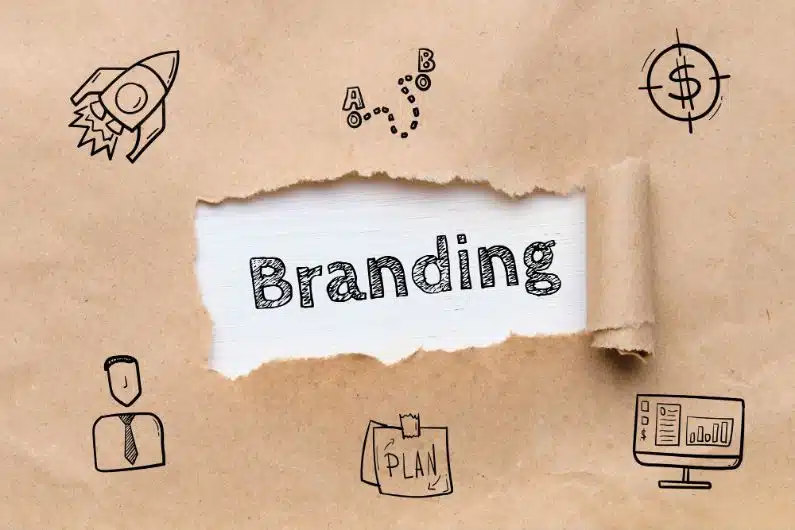Marketing matters. Whether you are promoting a new product, a piece of software, a small business, or a creative project, you’ll need to invest in high-quality advertising to reach the widest possible audience, this includes building video content, as the world has become more accustomed to engaging with this type of advertisment. For international businesses, that means thinking on a global scale.
Video content can be the key to successfully connecting with people. And that’s because it’s more than a promotional tool: video gives us a way to inspire, educate, and entertain. You can’t afford to overlook this potential, regardless of whether you have an audience of one thousand or one million. Let’s take a closer look.
The Facts and Figures
In 2019 alone, 78% of people in the U.S. watched videos online during a given week, and 55% watched videos every single day. Watching video content has become part of our daily routine, and that means a well-made video can reach more people now than ever before.
The numbers don’t stop there. Viewers retain as much as 95% of a message from a video, compared to 10% when reading the same message in a text format. That’s why building video content is an absolutely essential part of reaching a global market in 2020.
Video marketing works. 99% of marketers said that they would keep using video in their marketing strategy with most of them will either keep or increase their spend. Some 87% of marketers say video helped their ROI increase.
Getting Started With Video Content
Video is a powerful medium. It taps into our emotions and serves as a compelling storytelling vehicle. It can leverage things like royalty free music to make people laugh or cry. And as something that includes everything from blockbuster films to corporate ads to home video footage, there are no limits to the topics you can cover with a video project.
However, video production isn’t cheap. Yes, it’s an effective way to build and engage with a wide audience. And yes, it’s an extremely valuable way to promote something (and actually drive people to take their next step). After all, 62% of people said they were more interested in a product after seeing it in a Facebook Story.
But most people don’t have the equipment and skills to create a world-class video. That means if you can’t hire other people to handle that work for you, you’re going to need tips and tools to help you build the kind of videos that will resonate with your audience.
Thankfully, the video community has hit a period of rapid expansion. You don’t need an expensive camera or a film school education or a video editing job to produce high-quality video content. People are out there right now starting YouTube channels and telling stories while building a global audience.
You just need an idea and a camera to get started, even if that camera is just your phone.
Knowing how to make a video (or, at the very least, how to use one) can make all the difference in helping you achieve your goals.
What Will You Need?
If you want to make the videos yourself, you’ll need a few specific tools: A camera, a computer, and a piece of editing software. Obviously, those three items can fall into a huge range of prices — the important thing to remember is that you should only invest as much money as makes sense for your personal budget.
As mentioned before, you don’t even need to buy all of this. You can always hire a freelance filmmaker or video editor to help you put your videos together. And you can always find tools — like free editing software and shot list templates — to help you simplify the video creation process.
Video content gives you a sense of freedom in how you tell your stories. The written word is powerful (humans have been reading books for thousands of years, after all) but it’s easy to see how combining that with a visual and audio element can provoke emotion in new ways.
Popular Styles of Video Content
We’re going to explore three popular presentation styles for video content. To give you an idea of how video can help you reach your audience, let’s also take a look at the specific benefits that each style has to offer:
- Narration: Some videos exist solely to tell a story, like this unforgettable Super Bowl ad. You’ve probably also seen short films or travel vlogs that don’t really have any call to action but still affect you in some way. For inspiration, check out these 60-second documentaries on Facebook that excel at compressing interesting, thoughtful stories into small packages.
- Explanation: Videos serve as a great medium for educational content. Given the statistics about video-watching and message retention from earlier in this post, it’s clear that people are turning to video as a way to learn and grow. Explanation videos provide that while also allowing the video-maker to highlight the value of their product or service.
- Communication: If you’re trying to build a company or personal brand, you’ll want to keep your audience updated on your news. To add a personal touch to your content, you or your team could appear in your videos. This will help the audience to connect with your company.
Feeling overwhelmed by the idea of video marketing? Remind yourself that video content gets 1,200% more social media shares than posts that include only text or images. This giant number can significantly impact the short- and long-term success of your business.
Make Your Content Accessible to a Global Audience
For international businesses, or those hoping to branch out into overseas markets, video content is key to reaching potential clients abroad. With YouTube having more than 2 billion users and Facebook drawing over 8 billion video views every single day, we know that video content has the power to reach millions of people around the world.
Translating your video content into languages relevant to your business goals and producing original content in that language will let your customers know your services are for them. Don’t make international clients resort to questionable automated subtitles that may leave a bad impression.
In today’s digital world, businesses and brands that create video content that reaches global audiences are the ones that thrive. Content creators are able to reach new audiences with ease and efficiency thanks to the growing popularity of online streaming services like Netflix and the go-to video-sharing platform like YouTube.
However, creating a piece of video content that can be easily understood by people all over the world isn’t as easy as it sounds. Creating content in multiple languages is not something most businesses are prepared for—but it’s something you need to keep in mind if your brand has intentions of expanding internationally anytime soon.
That being said, in this blog post, we’ll be walking you through some tips on how to create video content that reaches global audiences.
Insert Subtitles
Whether you want to create training videos or in introduction video for a business partnership, you should always add subtitles to your video content. Subtitled videos also make your videos more accessible to those with impaired hearing and viewers that watch the video on mute.
Whether you use text on the screen or use YouTube Closed Caption (CC) feature, adding subtitles is a must-do practice when it comes to reaching global audiences.
Tailor Your Content to a Global Audience
We’ve been breaking down some technical practices, but it’s also worth noting that you should create content that people in different countries can relate to and are interested in watching. In other words, make videos that have a universal appeal.
Jump on the trend that has been gaining traction globally, like the COVID-19 pandemic, global warming, and international holiday seasons (e.g., Christmas, New Year, etc.). You can also delve into general themes like music, food, technology, and sports.
Consider Hiring Translators
If you’re creating video content that has a very specific message or theme, and you don’t want to rely on YouTube’s translation features, you should consider hiring a translator to translate your video’s captions into the language of your choosing.
Hiring a translator might sound like an expensive task, but it’s actually quite affordable. You can easily find freelance translators who offer their services for as low as a few dollars per minute of translated content.
These translators are a great investment for your business because it allows you to completely control the tone and message of your content. Plus, you can use the translated captions in other pieces of content in the future, which makes the initial investment even more worth it.
Add International Audio-Only Transcript
If you are creating video content that has a strong message, you might want to consider adding an international audio-only transcript to accompany your video. Adding an audio-only transcript allows non-native speakers to read your content, even if they can’t understand the language your video is in.
Adding an audio-only transcript to your video content is incredibly easy. You can either transcribe your video yourself with minimal video editing tools or you can hire someone to do it for you. If you choose to hire someone to transcribe your video, make sure they are using industry standards when they do it.
Make Silent Videos
If you are creating video content with a very specific message and don’t want to add audio or subtitles, you can consider making your video a silent one. There are tons of silent vlogging videos on YouTube that make this type of video a new trend.
Silent videos transcend languages– there’s no language barrier. As they are self-explanatory, they are a great option if you’re not sure what language your audience speaks or if you don’t want to limit your content to one specific language. They also work well for businesses that want to share a visual message while remaining brand-agnostic.
But, the biggest challenge is that you must be able to communicate the message using visual elements; gestures, body language, and facial expressions. You can also opt for animations with sound effects.
Final Thoughts
Whatever kind of business you have, embracing video content as a marketing tool is sure to help you reach new customers and keep existing ones engaged. With relatively little equipment, you can create dynamic, shareable videos that emphasize your brand’s mission. But remember, translation is key for global results.
We’re now living in the digital world where borders between countries are becoming blurred– thanks to the internet. So, making your videos accessible to audiences around the globe– regardless of the country they’re from and what language they speak can help you expand your reach. This, in turn, will lead to more discoverability. With those actionable practices above, you now know what you should bring to the table to make video content for global audiences.
If you’re looking for a professional translation service for your marketing material, our experienced marketing translation team is here for you. With a wide range of language combinations available, BeTranslated is your one-stop-shop for top-quality translation and localization services. For more information, or a free, no-obligation quote, get in touch today.





